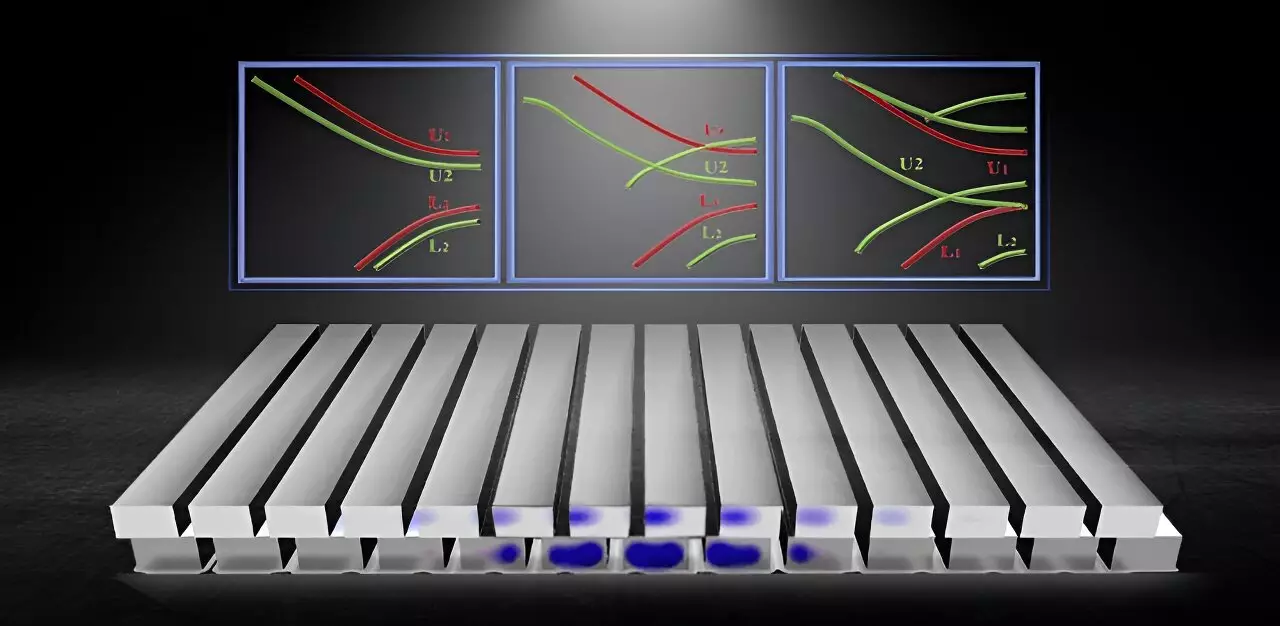In the realm of condensed matter physics, the convergence of two lattices with distinct angles or periodicities gives birth to a fascinating phenomenon known as a moiré superlattice. Within this superlattice, a hidden player emerges – the moiré flatband. These flatbands have the ability to shape advanced light-matter interactions, ranging from laser emission to second harmonic generation. The power to control flatbands is crucial in the field of moiré physics, where it opens up new opportunities and potential applications.
Recently, a collaborative research team consisting of scientists from the University of Electronic Science and Technology of China, Anqing Normal University, Guangxi University, and Nankai University proposed a groundbreaking method to manipulate moiré flatbands. Instead of relying on special structures and rotation angles, they focused on adjusting the band offset of two photonic lattices in the parameter space. This approach offered a fresh perspective on the control and generation of moiré flatbands.
Through their experiments and calculations, the research team made a fascinating discovery. As they varied the band offset, they observed the appearance and disappearance of certain flatbands in the superlattice. However, within a broad range of band offset, they found the existence of two groups of robust flatbands. These flatbands remained steady, easing the strict control of structural parameters required to obtain a nontrivial superlattice. This revelation opened up a world of possibilities in moiré photonics.
By altering the structural parameters, the resonant frequencies of these robust flatbands can be adjusted. This presents an opportunity to create novel multiresonant moiré devices. The ability to tune the frequencies of these flatbands through band offset adjustments provides immense control and potential for technological advancements.
The researchers achieved this breakthrough by starting with a mismatched silicon-based bilayer moiré superlattice. They then varied the thickness of one layer to adjust the band offset. The team analyzed the resulting band structure at different band offsets, revealing the significant influence of the band offset on the moiré flatbands.
To gain a deeper understanding of the robust flatband formation, the researchers proposed a simple yet effective diagrammatic model based on the coupled-mode theory. This model took into account the structural characteristics of the moiré superlattices and shed light on the similarities and differences in the formation of these flatbands. To validate their findings, the authors incorporated full-wave calculations into the diagrammatic model, successfully predicting the field distribution of the robust flatbands.
This breakthrough in moiré physics opens up new horizons and uncharted paths. The ability to control moiré flatbands by tuning the band offset in the parameter space offers a simple yet elegant method to unlock the potential of nontrivial superlattices. With the power to manipulate the frequencies of these flatbands, a realm of multi-resonant and high-quality moiré superlattices emerges.
The diagrammatic model developed by the researchers is not just a tool but also a window into the world of flatband formation across diverse moiré superlattices. It provides insights into the underlying mechanisms and paves the way for future explorations into innovative moiré devices and the captivating realm of moiré physics.
This research holds the promise of inspiring future explorations into the vast potential of moiré physics. The ability to control moiré flatbands through band offset adjustments opens up new avenues for technological advancements and scientific discoveries. By unraveling the mysteries of flatband emergence and disappearance, scientists can delve deeper into the intricate world of condensed matter physics and uncover new frontiers in the field of moiré photonics.



Leave a Reply